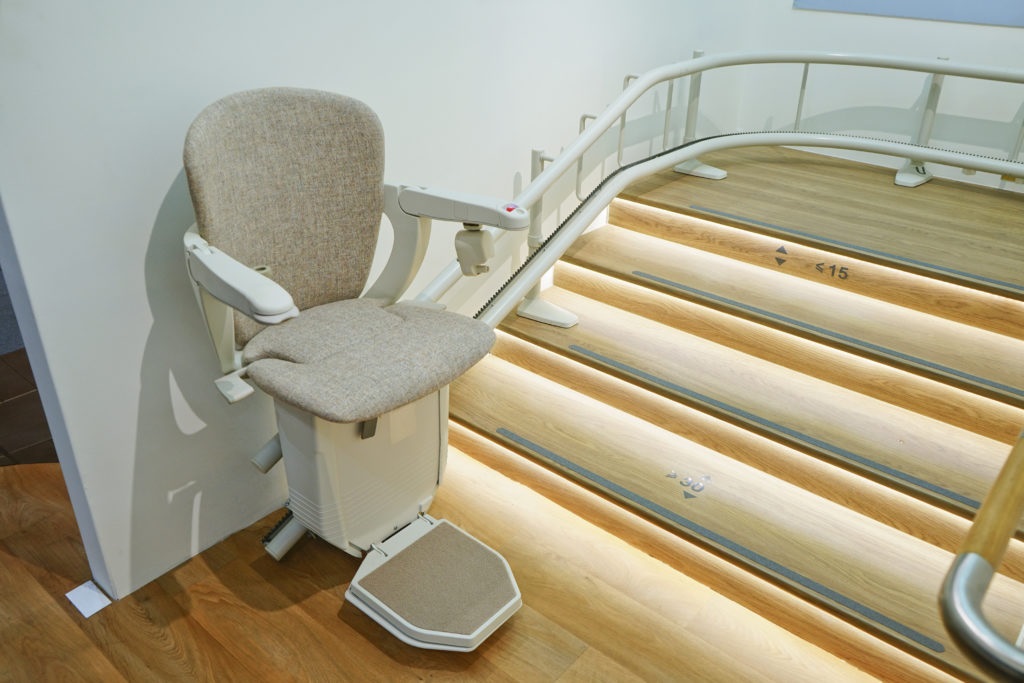
Have you thought about how you can make the staircases in the house easy for elderly or disabled relatives who may have trouble ascending and descending them?
I’ve compiled an in-depth manual that will supply you with an in-depth knowledge of stairlifts. The guide discusses the various varieties of stairlifts, their mechanics, the individuals who could profit from them, the associated expenses, their advantages, and their safety features. Do check out: adapt my home
1. What exactly are stairlifts?
Stairlifts are powered by electricity elevating devices that facilitate the ascent and descent of stairs for people with restricted mobility.
The apparatus includes either a seat or a raised surface, according to the user’s specific requirements.
2. How do stairlifts operate?
- A stair lift moves along a rail installed on the staircase to operate. A motor powers the movement, which propels the lift together with a track.
- The motor is driven by an energy source that is perpetually and autonomously charged.
- The device can be recharged from either the top or bottom of the stairs, guaranteeing that it will always have sufficient power to traverse the entire flight without shutting off.
- The operation of stairlifts is uncomplicated. Utilize the small button or joystick found on the armrest to operate the funicular. Moving it up or down will regulate the stairlift’s movement.
- The funicular comes standard with two remote controls, allowing many people to control it up or down the stairs.
3. Who needs stairlifts most?
- MS or arthritic patient.
- Hip-replaced person.
- Surgically immobile.
- Frail senior.
4. Stairlift Types
- Straight stairlifts are the simplest and may be put on most straight stairs.
- Curved stairlifts must be used on staircases with turns.
- Perch (or standing) stairlifts are best for those who have problems sitting and bending. The raised seat allows the user to perch rather than recline.
- Outdoor elevators are weatherproof and have the same features as indoor stairlifts.
5. What is the cost of a stairlift?
The cost of straight stairlifts, including supply and maintenance, is approximately €1,800. These types of stairlifts can be installed within 2-3 days after placing an order.
Curved stairlifts are typically more costly due to their customized design. The typical price range for them is usually between €5,000 and €6,000.
6. safety features:
Safety elements are included into stairlifts. Seat belts, stairs-detection sensors, and emergency stop buttons are examples.
- Sensors are used to identify potential obstructions.
- The stairlift is equipped with a lockable on/off switch that can be used to deactivate it when it is not in use.
- The stairlift is equipped with both mechanical and electrical wiring braking systems that work together to bring it to a seamless and safe stop.
- Install harnesses on the backrest of the stairlift to avoid consumers from slipping off.
- The swiveling footplates serve the purpose of bridging the distance that separates the stairlift and the highest point of the stairs.
7. Benefits of Stairlifts
- Make your house secure and pleasant for unrestricted movement.
- Promote self-reliance.
- There is no requirement for going up and down stairs to access an upstairs bathroom or bedroom.
- You have the option to remain in your present residence without having to move elsewhere.
- Stairlift operation is easy to operate.
- It folds and unfolds effortlessly, making it easy to store.
- Running expenses are equal to boiling a kettle, making this device inexpensive.







